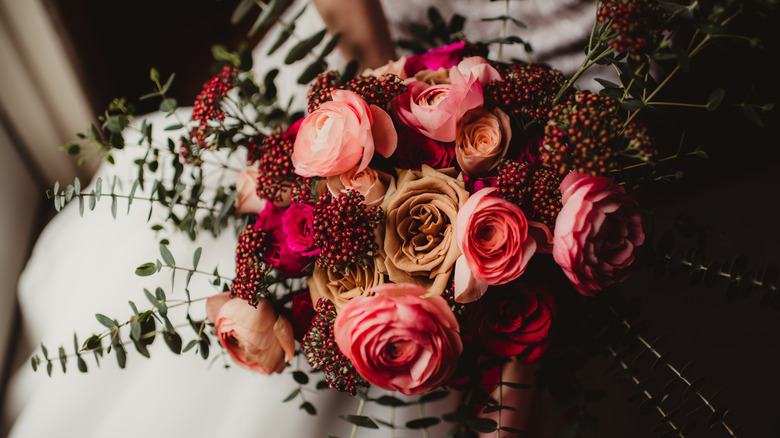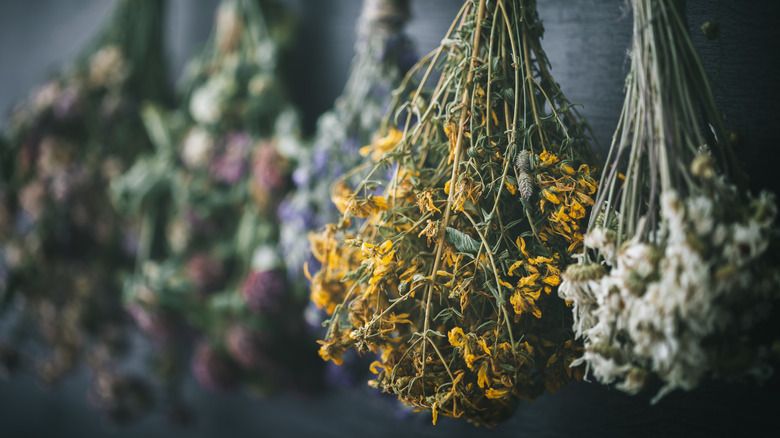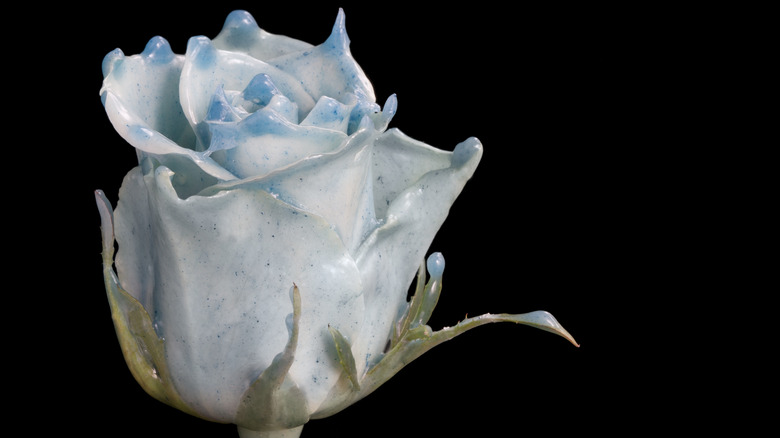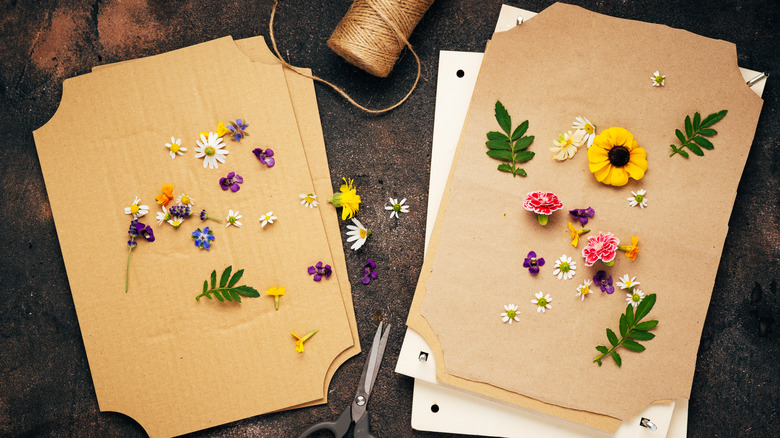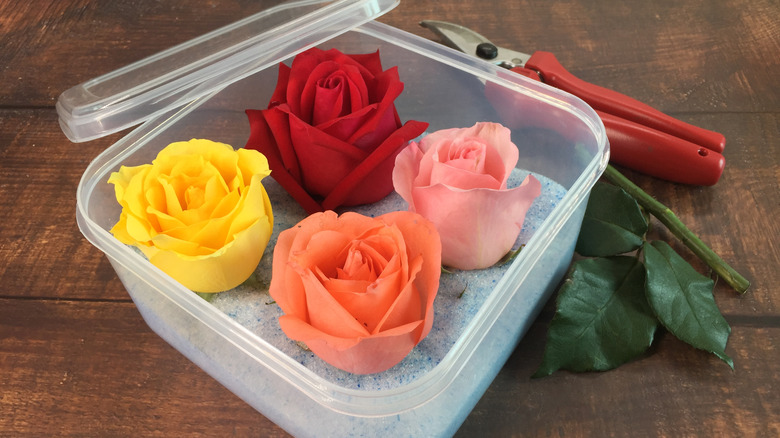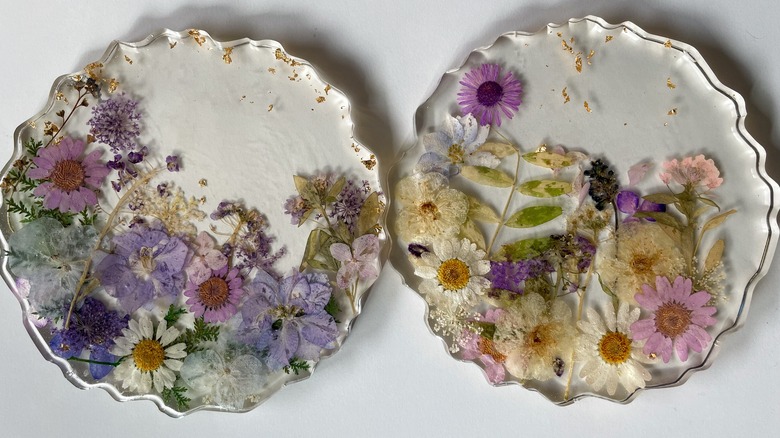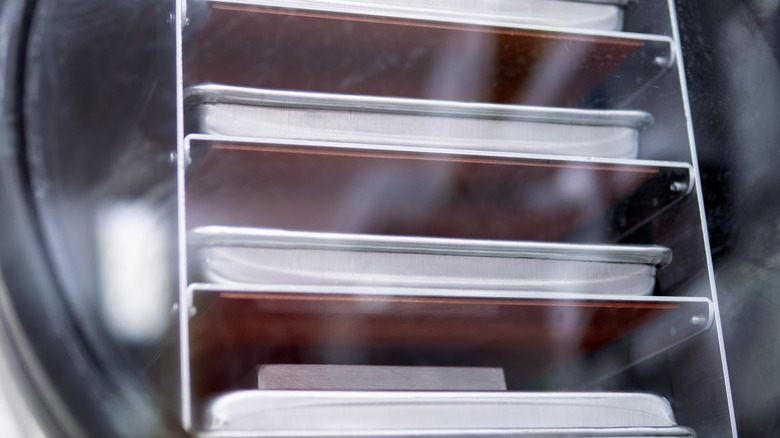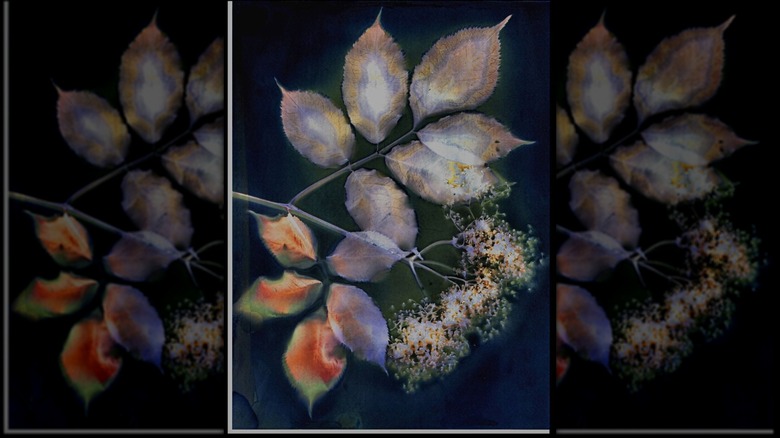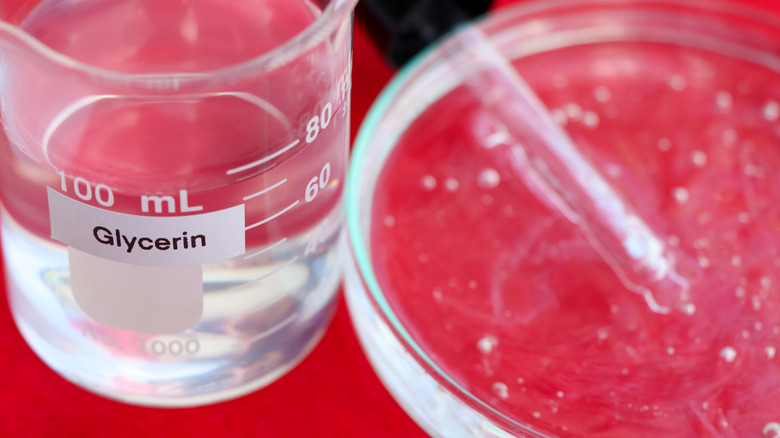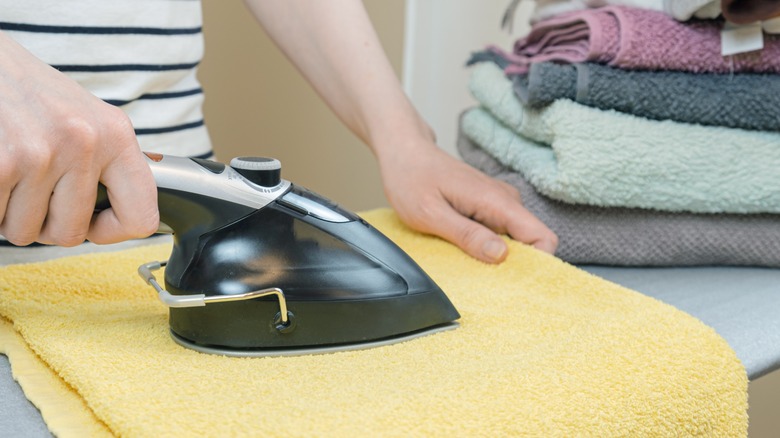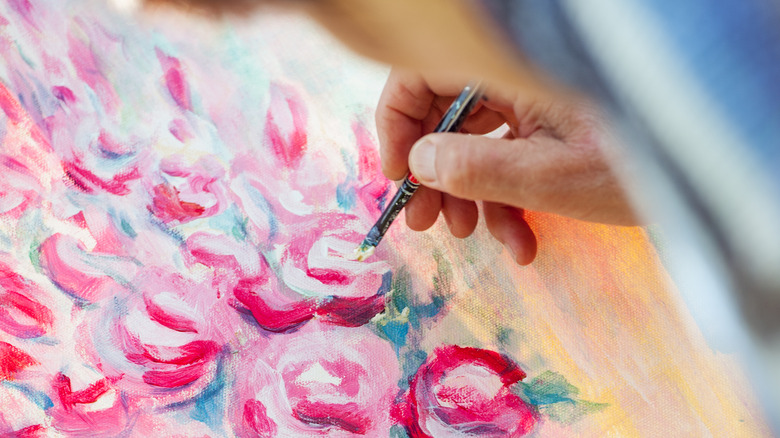Ways To Preserve Your Wedding Bouquet And Put It On Display
Getting married is one of the largest events in a person's life, and when it's a day full of celebrating love with your closest friends, family, and partner, it makes sense that you would want to hold on to those memories as long as possible. Photographers and videographers are important to help capture and document the big day, but having physical reminders in the form of special objects from the wedding can also help remind you of these special moments. Unfortunately, unlike fabric or jewelry, flowers aren't built to last, and anywhere from a few days to a couple weeks after your wedding, your bouquet will likely start to droop and wither, even after taking steps to keep your cut flowers fresh longer. With a bit of preservation, however, you'll be able to display and enjoy your blooms for years to come.
Preserving flowers is by no means a new art, but when it comes to something as important as a wedding bouquet, it's necessary to consider which method fits the best for your flowers, your style, and your desired final product. Each technique will produce a slightly different result, but they will all give you a keepsake that doubles as a piece of beautiful, sentimental, and personalized décor for your home.
Air drying
Air drying your wedding flowers is definitely the most low-maintenance method of preserving them. To do this yourself, wrap some string around the selected flowers you'd like to keep and hang them from the ceiling or on the wall away from direct sunlight. In a few weeks, you should notice that the flowers are completely dry. This method works well for small blooms like baby's breath and lavender or for heartier inclusions like eucalyptus or grasses, but larger petals could crack and crumble. Air-drying flowers will also likely mean a desaturation or browning in their color, which can be an issue for vibrant or pastel bouquets.
Wax dipping
If your intention is to completely freeze your wedding bouquet in time for a bit longer, wax dipping might offer a solution. This method doesn't permanently preserve your blooms — they'll likely last a little over a month before starting to lose color — but it's one of the few options that won't cause the petals to fade or crack. Melt some soy wax, then dip in your flowers petal-first. Pull them out, let the excess drip off, then place them upright in a cup or vase to set. The wax will trap in their moisture and create a protective barrier so they will look fresher for longer.
Pressing
If you're planning to use your flowers to create flat art like a wall hanging or tray, pressed flowers are the way to go. This method requires you to either sandwich your flowers between the plates of a flower press or between the pages of a heavy book. Over time, the pressure will help to force out moisture and create a flat, paper-thin specimen that you can then incorporate into future projects. Pressing obviously works best with flowers that are already relatively flat, but individual petals of flowers with thicker bases, like roses or ranunculus, can be used if you're worried about the full blossom getting moldy over time.
Silica gel
If you enjoy the versatility and preservation of pressed flowers but want something that's better at maintaining flowers' three-dimensional shape, consider using silica gel. You're likely familiar with silica in the form of tiny packets included in shoeboxes or packages to help trap moisture, but this desiccant power is what makes these tiny beads so great for preserving flowers, too. Simply cut off the heads of your flowers, place them in an airtight plastic container, and cover them completely with silica, making sure you pour and place gently. After a few days, remove your flowers and gently dust them off to reveal perfectly preserved blooms.
Resin art
Pressed or dried flowers can make for great décor when placed in a frame or displayed somewhere where they won't get damaged, but there's still a major worry of petals cracking or crumbling when they're handled. If you want to ensure your flowers don't get damaged while still being able to see them every day, consider incorporating them into a piece of resin art. Flowers, once they're completely dry, can be placed in molds and coated in resin to create decorative pieces like paperweights and jewelry or functional décor that can be used around the home, like trays and coasters.
Freeze drying
Freeze drying might be a less common approach than pressing or air drying your flowers, but if you want them to look as accurate to your big day as possible without deteriorating, it's the best way to maintain their shape and color. Unless you have access to a freeze drier at home, however, you'll likely need to find a business that will professionally freeze-dry your bouquet for you. Costs can vary based on your desired display method, the size of your bouquet, and the business you decide to visit, but it will likely run you at least a couple hundred dollars to preserve a full bouquet.
Sun painting
Heliographic art, also called sun painting, is an art technique that utilizes technology more commonly associated with photography to make a print. With this art style, you paint a surface with UV-reactive paint or dye, then place objects on top, in this case, flowers. After you place the piece in the sunlight, the pigment will react with the sun everywhere besides where it's blocked by the flowers, leaving a perfect outline. This is a bit more creative and minimalistic than some of the other options, but it's a great way to create an exact image of your flowers without actually hanging them on the wall.
Glycerine
If you'd prefer to display your wedding bouquet in a vase rather than removing the flowers to use as inclusions in other pieces of décor, consider trying out glycerine. When mixed with warm water, glycerine creates a solution that replaces the water in flowers' stems and leaves, allowing them to remain perky and fresh-looking for longer. Simply place the flowers in the solution as you would regular water, then leave them for a week or two. Unfortunately, this isn't a permanent solution since flowers treated with glycerine can last from six months to a year.
Wax paper and an iron
Sometimes, you don't have the time or patience to wait for your flowers to completely dry out after being pressed. The process is fairly hands-off but can still take weeks, so if you need a faster-acting solution, consider trying your hand at preserving flowers with a clothing iron. Simply press your flower between two sheets of wax paper, cover with a cloth, and run the iron over the top on low to medium heat without steam. This process doesn't work well with thicker or more dimensional flowers, but it's a great substitution for traditional heatless pressing in a pinch.
Custom painting
Having a physical keepsake from your special day in the form of preserved flowers is a great way to mark the occasion, but sometimes, it's hard to pull off. If your flowers got damaged, you got to preserving them too late, or you attempted a preservation method that didn't turn out how you hoped, consider commissioning a painting of your bouquet. An average commission will cost around $1 per square inch, so you can easily scale the size to your budget, and you'll have a permanent physical piece of art that is personal to you and your spouse, even as your actual bouquet wilts over time.
